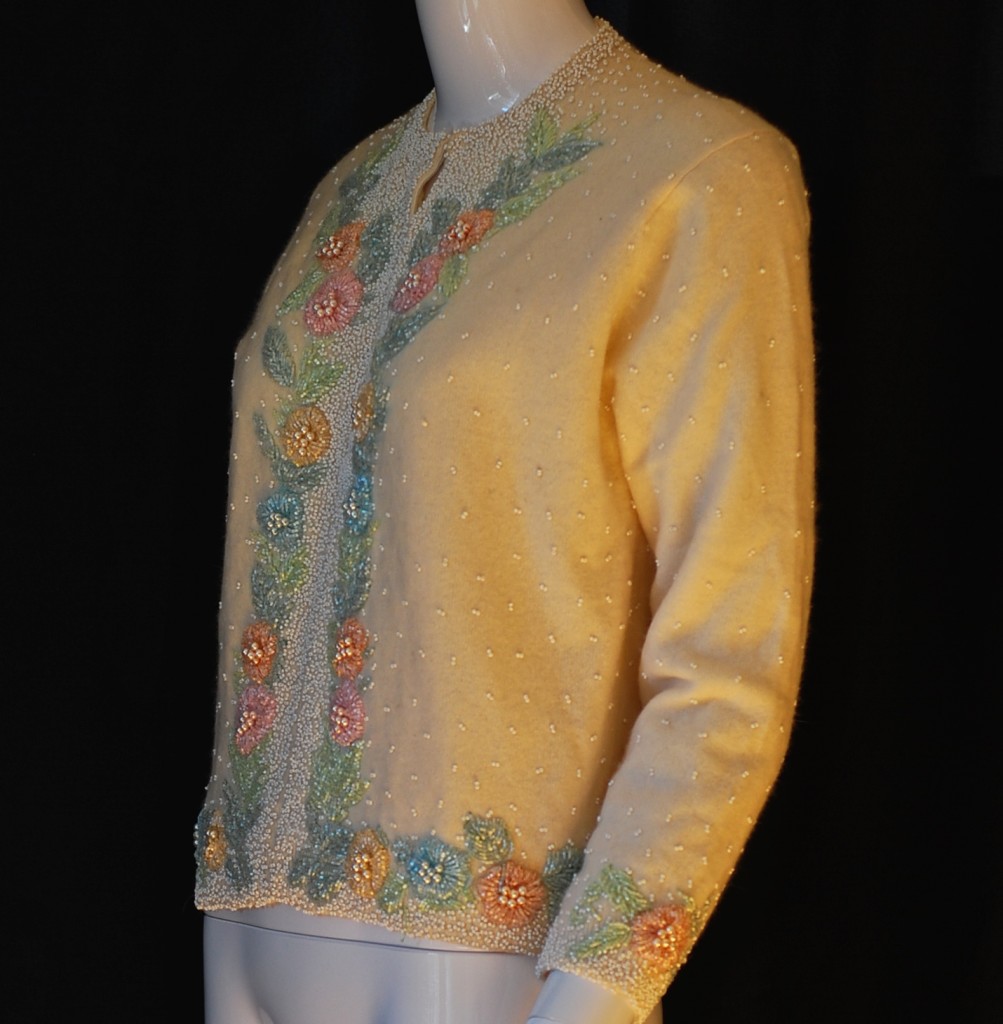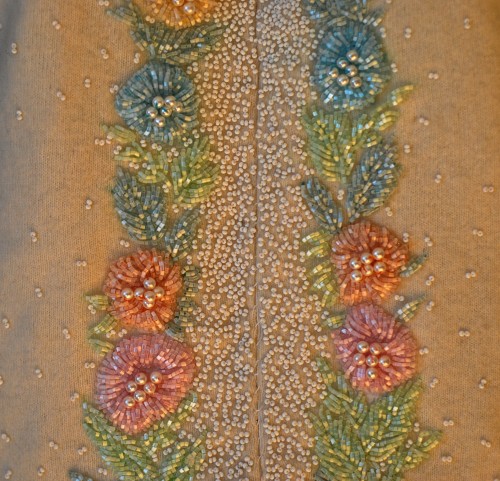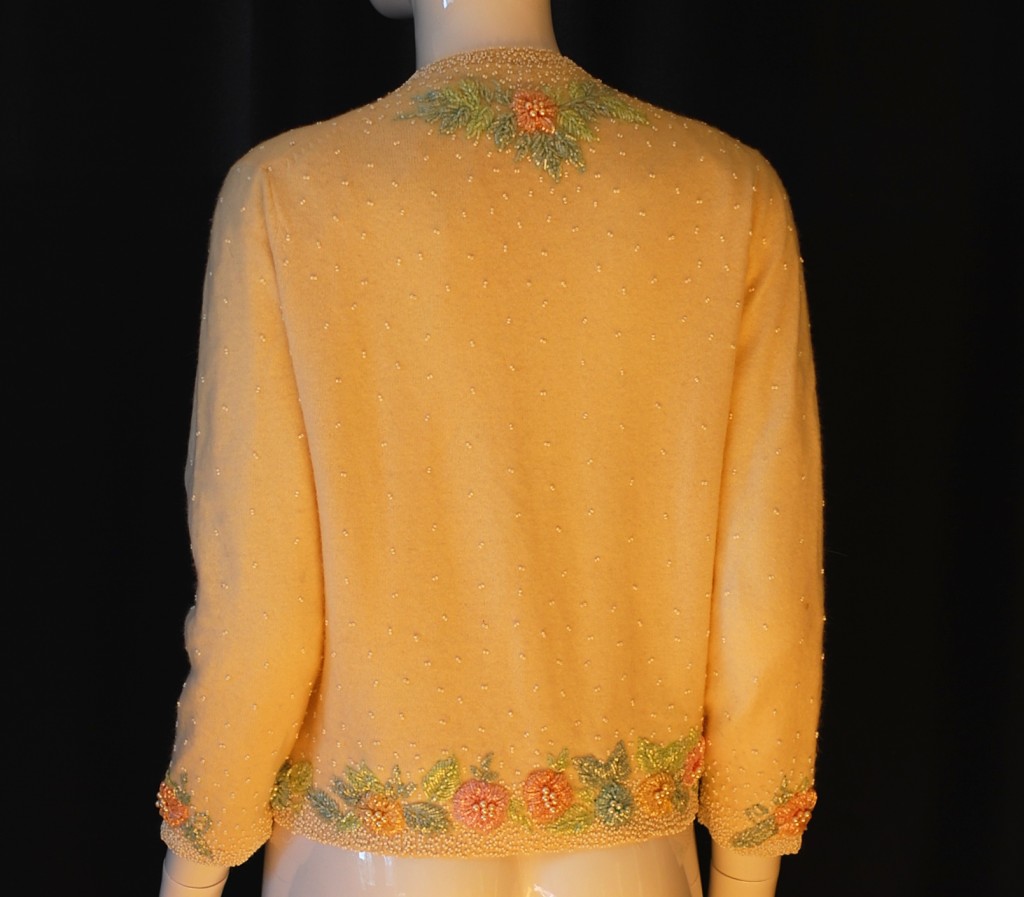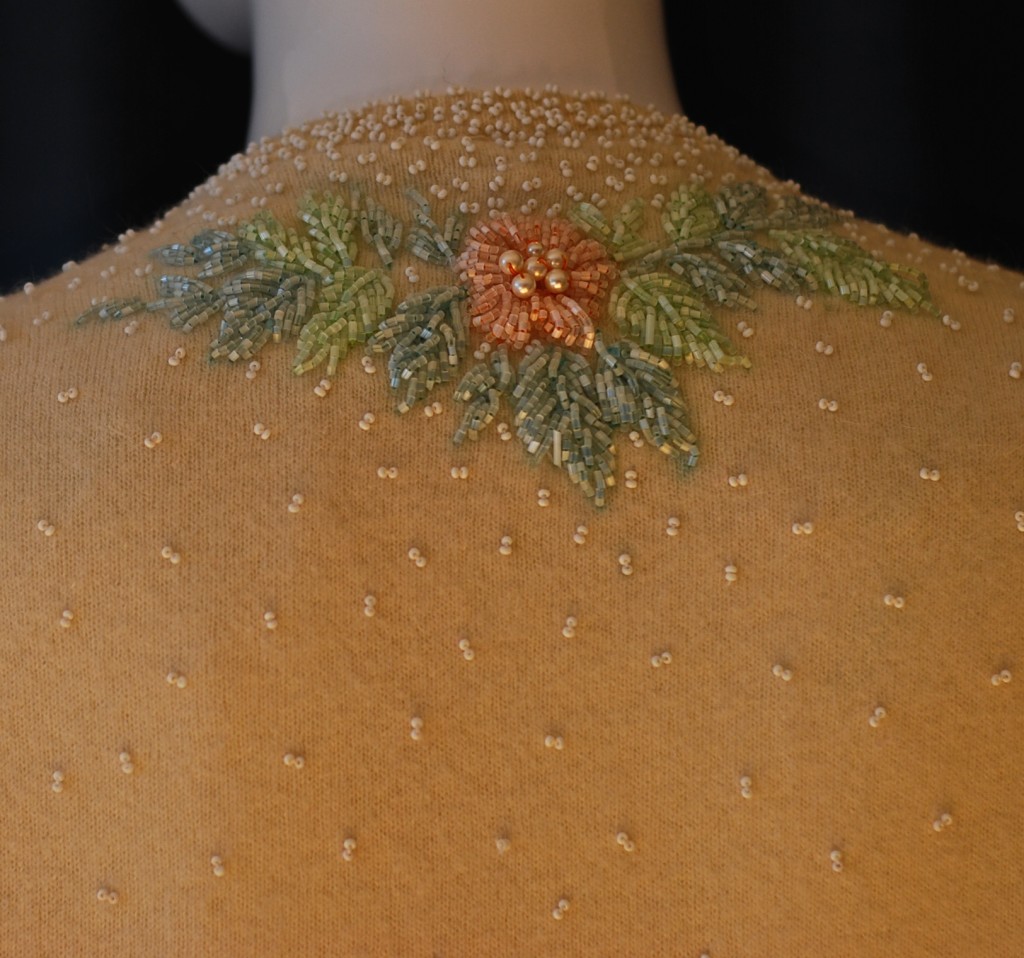1950’s Classic Art to Wear Beaded Wool Sweater
For those who have done extensive needlework, embroidery and beading on fine garments – they can readily see the time and craftsmanship involved in these creations from the past. However – it is hard for most of us to imagine the time and patience required to bead such a sweater as the one featured in this post. The fifties era holds claim to some of the most beautifully artistic beaded sweaters of all time. These fine beaded sweaters have what it takes to hob nob with the most cherished mid-century vintage and luxury designer pieces. It is rare to find them in good condition (especially the lighter coloured ones) – that have survived the rigours of the past sixty five years to age as gracefully as this!
If you happen to have a hand beaded sweater from the fifties that needs cleaning; the following description is a common-sense method of care and cleaning that I use for beaded woollens:
– Rule number one is to handle it very gently, for the sake of the beadwork as well as the wool. Create a bath of water that is blood warm or body temperature, not quite tepid. Add and mix Zero and then gently insert the sweater.
– If the sweater has a stain, you can put some Oxiclean directly on the stain and see if it will lift it out. Swirl gently. Don’t soak it for very long.
– Empty the bath and add water to rinse two or three times until the soap is rinsed out. Lay it flat on a rack with a big towel over it and gently shape it.
– If the lining has stains or colour bleed from the exterior, in my experience, they are less likely to come out than stains in the wool.
– However, if the lining is white cotton and lifts away from the sweater, you can insert a white linen hankie between the lining and the wool. This enables you to treat the stain on the lining without coming in contact with the wool on the sweater.
In the case of the sweater shown in this post, the lining is synthetic. It appears that the colour from the surface beading and thread, over time, has leeched onto the lining in certain spots. I have not attempted to treat that, because it is not visible, and is not likely to come out. It is not worth taking any risk that might damage the exterior of the sweater.
The other tip to share with those of you who have an interest in preserving this type of artwork on textiles, especially with wool – is to put the item in a snap lid plastic container and freeze it for 24 hours. You can do this even before washing it. Freezing kills moth larva and is a good practice for maintaining fine vintage woollens. But, don’t wash it immediately after freezing it. Let it return to room temperature first. The idea is not to shock it too much. Also, a drop or two of neem oil can be mixed with the Zero for washing certain woollens – as an extra prophylaxis.




